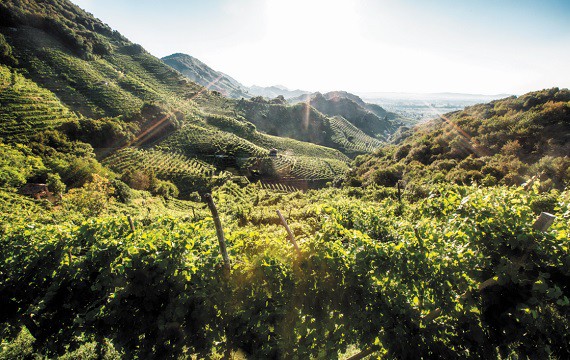________________________________________
THE DRINKS INDUSTRY has been going through a premiumisation period over the past decade and one of the modern associations with a premium liquid is the absence of added sugar. Premium rums, for example, nearly always advertise the fact that they have not been artificially sweetened, but one category which has no problem fessing up to adding sugar is prosecco, even at the premium end.
Prosecco Denominazione di Origine Controllata, or DOC, is the area within northern Italy where every bottle of prosecco must originate – if not then it is simply labelled ‘Italian sparkling wine’. In 2016 the DOC announced an extension to the limit of hectares within the denomination from 20-23,000 to meet international demand amid fears from producers and farmers of a global shortage.
DOC figures revealed a 50% harvest increase between 2014 and 2015 due to the continued demand from the UK, Switzerland and its biggest export market, Germany.
Burrowing further into the quality structure of prosecco is the Denominazione di Origine Controllata e Garantita, or DOCG. This is generally regarded as the premium hub of prosecco, stretching slightly more than 8,000ha between Conegliano and Valdobbiadene, two towns 40km apart just north of Venice. This region therefore gives birth to Conegliano Valdobbiadene Prosecco Superiore DOCG, which produced more than 94m bottles in 2017 between 181 different producers.
Within this premium hub of prosecco is the Cartizze hill, 107ha of steep, south-facing vineyards shared between 140 growers. It is considered the birthplace of fine prosecco and sits at the top of prosecco’s quality pyramid. The area earned its glowing reputation through coincidental circumstances. Due to the steep slopes on which the vines were originally grown, local farmers would harvest the grapes much later than the fruits on flat lands. This over-ripping meant the grapes were sweeter than the rest and this led to the creation of naturally sweet prosecco, and later Valdobbiadene Superior di Cartizze DOCG.
With climate change continuing to delay harvest times and upset traditional winemaking, and rising demand putting pressures on consistent production, sugar has become an important ingredient in prosecco. The majority of winemakers, even within the Cartizze region, add sugar to their wines to replicate the natural sweetness originally discovered by chance. Sugar is such a prominent part of prosecco production that there are three different categories devoted to it: Brut – up to 12g/l; Extra Dry – 12-17g/l; and Dry – 17-32g/l.
LESS IS MORE
Valdobbiadene Prosecco Superior DOCG brand Drusian is going in the opposite direction. Francesco Drusian, winemaker at Drusian, likes to keep sugar levels low to preserve the natural flavours in his wine.
Earlier this year at Vinitaly, Drusian released 30 Raccolti, a Valdobbiadene Prosecco Superior DOCG which uses grapes from – you guessed it – the 30 different vineyards under the Drusian name. However, it isn’t just the variety of terroirs involved that is impressive but the 0-1g/l of sugar used in its production.




